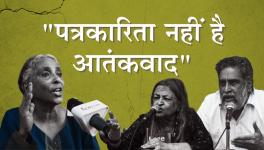A People’s History of how Deep was India’s Desire for Freedom
Who fought for our Independence is a question that will always be relevant and one that makes the current rulers of India squirm. P Sainath’s epic book, The Last Heroes: Foot Soldiers of Indian Freedom, published by Penguin Viking, is a passionately researched work on what can be called the people’s history of the freedom struggle. Beyond the narratives and works on individuals such as MK Gandhi or Jawaharlal Nehru, we have now, through this book, the story of some ordinary people who stood up against the Empire.
This research has been collected for over two decades, and the journalist author tells the stories in a very readable style. The social origins and regions from where the stories are gathered are diverse, and just descriptions of the backdrop and context take us into fascinating worlds. Take the story of Bhagat Singh Jhuggian of Punjab, who was 11 years old in 1939 when he was asked to shout “Britannia Zindabad/Hitler Murdabad” and instead shouted, “Britannia Murdabad/Hindustan Zindabad”. He was thrashed and thrown out of his government elementary school with the order describing the 11-year-old as “dangerous’’ and “revolutionary”.
The journey of the life that follows is fascinating, from Bhagat Singh becoming a courier for the revolutionary underground to the complete shock and trauma of the Partition that cut through Punjab. Bhagat Singh would join a faction of what would become the Communist party and work on organising labour and farmers, and during the Emergency, go underground to organise resistance. The details in the story are chilling as we go through the years of Sikh militancy in Punjab. All in all, we get a warm, layered, thought-provoking account of the life of this freedom fighter who passed away only last year at the age of 94. This Bhagat Singh is different from the famous revolutionary, but the introduction to the book is written by Prof Jagmohan Singh, the nephew of the great revolutionary leader.
There is too the heart-wrenching story of Demati, also known as Salihan, an Adivasi in Orissa who had, at a young age, taken on a gun-toting British police squad with a lathi. She is closing in on 90 when the author meets her in 2002 and finds her living in degrading poverty. Read this story to follow the author’s pursuit of acknowledgement for her and other Adivasis. He writes, “As always, the Adivasis, who are the first to die for freedom, are the last to benefit from it.”
The book is a collection of such powerful stories, painstakingly researched, with accounts of the very human and delightful interactions between the reporter and his subjects. It takes us through socially diverse swathes of India to tell us about the unknown participants in the freedom struggle. The very ordinary people, often dispossessed, who fight for a cause larger than their immediate survival. The book is a must-read, especially as in the popular imagination, the freedom struggle is perceived as being the result of the efforts of a few well-educated individuals, often lawyers and barristers.
In an age of vanities triggered by views, tweets and social media likes, P Sainath shows us, yet again, what good journalism is really about. He reminds us that we are tasked with telling the stories of others and not projecting ourselves. For this book, P Sainath has clearly spent years going to the ground to bring us these remarkable accounts. His Everybody Loves a Good Drought, published in 1996, is almost a textbook for journalism students about how to cover rural India.
Now comes this remarkable book, a must-read for anyone interested in the question of how deep into the countryside did the sentiment around the freedom movement actually penetrate. The many lovely stories in this book answer that question.
The author is an independent journalist and author. The views are personal.
Get the latest reports & analysis with people's perspective on Protests, movements & deep analytical videos, discussions of the current affairs in your Telegram app. Subscribe to NewsClick's Telegram channel & get Real-Time updates on stories, as they get published on our website.
























